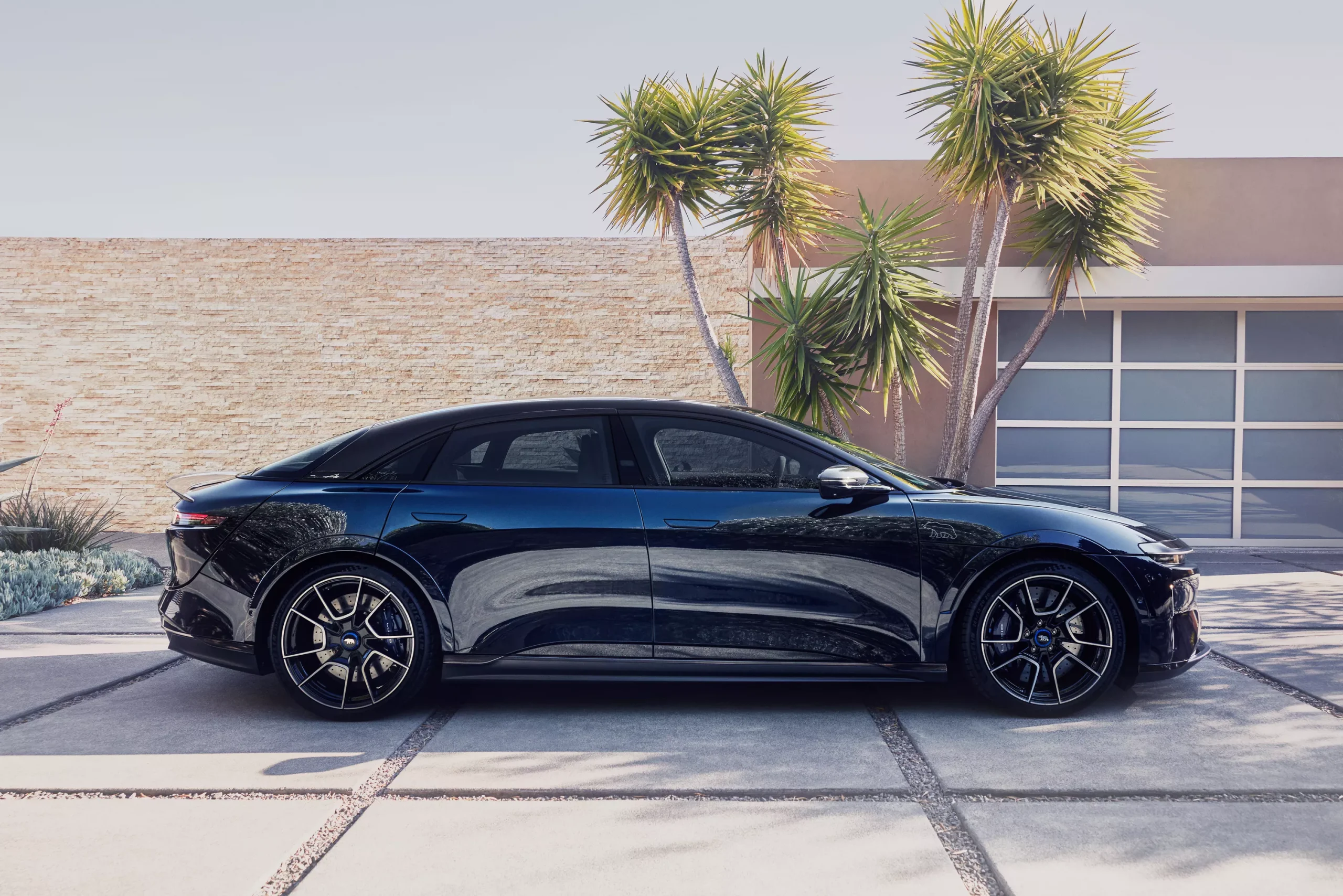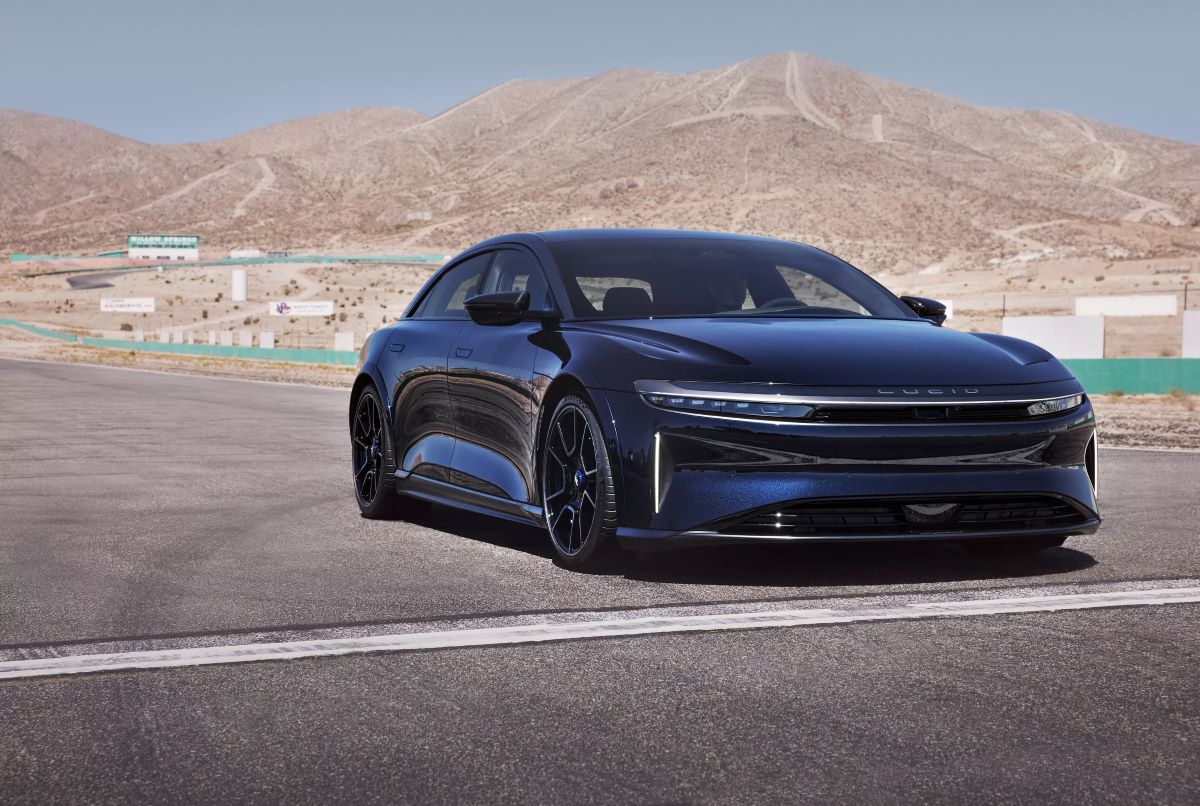The 2024 Lucid Air Sapphire has become the fastest electric vehicle we’ve ever tested, surpassing the Tesla Model S Plaid, which had previously held the title.
While the Sapphire matched the Plaid’s 2.1-second acceleration time to 60 mph, it was quicker by a tenth of a second in reaching 100 mph and completing the quarter-mile.
Lucid’s 1,234-horsepower all-wheel-drive sedan also accelerated to 130 mph faster, pulling ahead by seven-tenths, and achieved a top speed of 207 mph—setting a new record for EVs in our tests.
Welcome to Car and Driver’s Testing Hub, where we go into the numbers behind the tests. We’ve been pushing vehicles to their limits since 1956, providing objective data to complement our subjective impressions.
The Lucid Air Sapphire has now earned a permanent place in the Car and Driver record books.
With its three electric motors generating a colossal 1,234 horsepower and delivering 1,430 pound-feet of torque to all four wheels, this luxury electric sedan has become the fastest EV we’ve ever tested, placing it alongside the elite list of all-time fastest cars.
Tesla Model S Plaid Dethroned
The previous holder of the fastest EV title, the 2021 Tesla Model S Plaid, was outpaced by the Sapphire.
While the Lucid matched the Plaid’s remarkable 2.1-second run to 60 mph, it reached 100 mph in 4.2 seconds and completed the quarter-mile in 9.3 seconds at 153 mph.
Both figures beat the Plaid’s performance, which required 4.3 seconds to hit 100 mph and 9.4 seconds at 151 mph to finish the quarter-mile.
For anyone questioning whether a tenth of a second difference really matters, remember the famous words of Dominic Toretto: “It doesn’t matter if you win by an inch or a mile. Winning’s winning.” Even better, consider the Sapphire’s other acceleration times, which demonstrate its clear superiority.
Once it passed the 120-mph mark, the Lucid began to leave the Plaid behind, reaching 130 mph seven-tenths quicker at 6.0 seconds.
As the speedometer climbed to 140, 150, and 160 mph, the Sapphire maintained a lead of three, four, and five-tenths, respectively.
The comparison ends there, as the Plaid we tested was limited to a top speed of 162 mph, while the Sapphire reached an extraordinary 207 mph.
This puts the Lucid in rarified company, as only a few cars have broken the 200-mph barrier, and none of them were fully electric. (The latest Plaid, with the $20,000 Track Pack, also claims a 200 mph top speed.)

While being the fastest is certainly impressive, it’s only one of many qualities that helped the Sapphire set EV and sedan lap-time records during our Lightning Lap test at VIR earlier this year.
What makes the Lucid’s achievement even more impressive is that the Sapphire’s curb weight is 517 pounds higher than the Plaid’s (5,345 pounds vs. 4,828 pounds).
Technical Editor Dan Edmunds was the one behind the wheel of the record-setting runs.
What About a Sub-2.0-Second 60-MPH Time?
Lucid has been promising a sub-2.0-second sprint to 60 mph, but this feat is only achievable on a fully prepped drag strip surface. In fact, at Sonoma Raceway, our Edmunds managed to achieve a 1.9-second time to 60 mph. Here’s how he did it:
Sonoma Raceway is a professional-level NHRA drag strip, with a surface coated in a thick layer of race rubber that provides exceptional grip.
It also has a water box, which helps preheat the tires by facilitating controlled burnouts.
With these advantages, Edmunds was able to achieve a best run of 1.9 seconds to 60 mph, finishing the quarter-mile in 9.05 seconds at 154 mph.
He described it as feeling “like being shot out of a noiseless cannon.”However, our test surface is designed for consumer vehicles, not race cars.
It’s regular asphalt, with no water box and no burnouts. Additionally, we test in both directions and average the results, which is impossible on a drag strip.
Aside from the lack of tire preheating and two-way testing, the procedure is the same once you engage drag-strip mode: hold the brake firmly, mash the accelerator, release the brake, and hang on.
Traction control must be on for launch optimization in drag-strip mode. If it’s turned off, the tires will spin (even at Sonoma, as Edmunds can attest).
Given the much less sticky tire-to-track interaction, the two-way average of 2.1 seconds to 60 mph from our test is still remarkably close to the drag-strip time.
The difference of two-tenths was consistent through the quarter-mile, which ended in 9.3 seconds at 153 mph. It’s worth noting that the weather affected the track conditions on the test day.
A light rain had dampened the surface, which required some time for the sun to dry it before runs could be made. The track was likely cooler than usual during the test.

